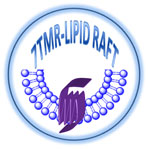Lipid raft-dependent glucagon-like peptide-2 receptor trafficking occurs independently of agonist-induced desensitization.
| Title | Lipid raft-dependent glucagon-like peptide-2 receptor trafficking occurs independently of agonist-induced desensitization. |
| Publication Type | Journal Article |
| Year of Publication | 2004 |
| Authors | Estall, JL, Yusta B, Drucker DJ |
| Journal | Molecular biology of the cell |
| Volume | 15 |
| Issue | 8 |
| Pagination | 3673-87 |
| Date Published | 2004 Aug |
| ISSN | 1059-1524 |
| Keywords | Animals, Caveolin 1, Caveolins, Cholesterol, Clathrin, Cricetinae, Cyclic AMP, Endocytosis, Endosomes, Filipin, Glucagon-Like Peptide 2, Glucagon-Like Peptides, Humans, Membrane Microdomains, Peptides, Protein Transport, Rats, Receptors, Glucagon |
| Abstract | The intestinotrophic and cytoprotective actions of glucagon-like peptide-2 (GLP-2) are mediated by the GLP-2 receptor (GLP-2R), a member of the class II glucagon-secretin G protein-coupled receptor superfamily. Although native GLP-2 exhibits a short circulating half-life, long-acting degradation-resistant GLP-2 analogues are being evaluated for therapeutic use in human subjects. Accordingly, we examined the mechanisms regulating signaling, internalization, and trafficking of the GLP-2R to identify determinants of receptor activation and desensitization. Heterologous cells expressing the transfected rat or human GLP-2R exhibited a rapid, dose-dependent, and prolonged desensitization of the GLP-2-stimulated cAMP response and a sustained GLP-2-induced decrease in levels of cell surface receptor. Surprisingly, inhibitors of clathrin-dependent endocytosis failed to significantly decrease GLP-2R internalization, whereas cholesterol sequestration inhibited ligand-induced receptor internalization and potentiated homologous desensitization. The hGLP-2R localized to both Triton X-100-soluble and -insoluble (lipid raft) cellular fractions and colocalized transiently with the lipid raft marker caveolin-1. Although GLP-2R endocytosis was dependent on lipid raft integrity, the receptor transiently associated with green fluorescent protein tagged-early endosome antigen 1-positive vesicles and inhibitors of endosomal acidification attenuated the reappearance of the GLP-2R on the cell surface. Our data demonstrate that GLP-2R desensitization and raft-dependent trafficking represent distinct and independent cellular mechanisms and provide new evidence implicating the importance of a clathrin- and dynamin-independent, lipid raft-dependent pathway for homologous G protein-coupled receptor internalization. |
| Alternate Journal | Mol. Biol. Cell |
